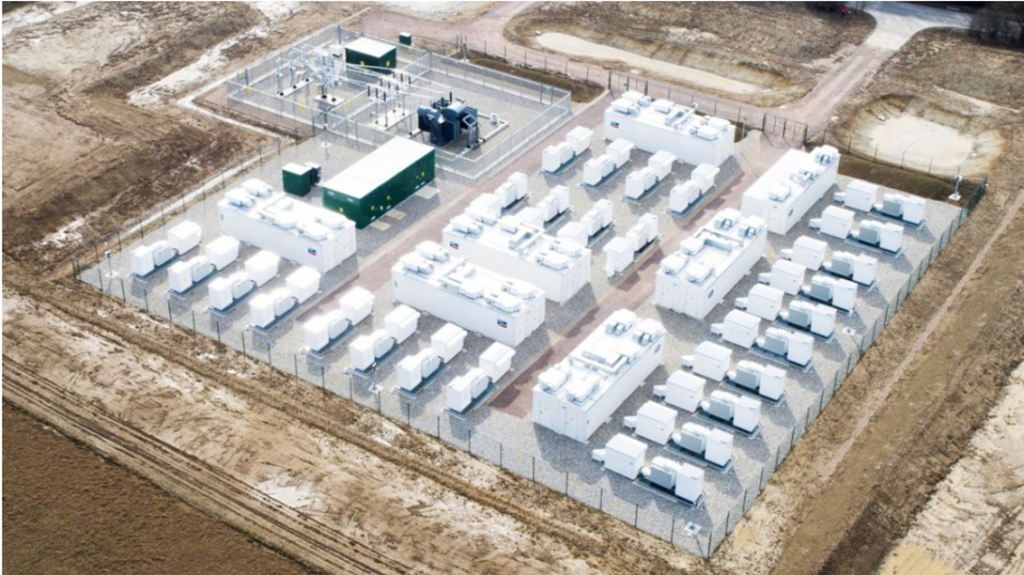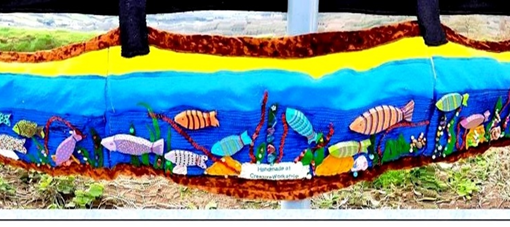12th May – BLOG has been in 2 parts this time.
This is 15B = the more usual words and images edition.
The Gravity of our Grid Situation, and weighty solutions. How hills, cliffs and mines may help solve our current impasse.
Newton Poppleford and East Devon Flooding Mud and a blocked leat under Luxulyan Railway Bridge



FLOODS
With so much focus on the Coronation, ordinary day to day news stories received little attention last week. But extreme weather events were still happening and one, really close to home, was in East Devon.
On Tuesday 9th of May according to the Devon county council, parts of Exeter and East Devon – including Tipton St John, Metcombe and Newton Poppleford – were the worst to be hit by torrential downpours.
A statement came from the Environment Agency 2 days later, saying “It is likely this is the worst flood experienced in Newton Poppleford for 50 years, exceeding the 2008 flood.” Thunderstorms, with hail as well as 2.5 inches of rain, pounded the area for 3 hours.
Michelle Teissier, landlady of the Golden Lion in Tipton St John, said “the River Otter burst its banks and water started rising at about 14:20. A couple by a window asked if the water outside was normal. We said it wasn’t, and it just started to rise and rise. It got knee-high on the road and was half-way up out kitchen door,” she said.
She added people had still been trying to drive through the village when the water was high, although it started to subside by about 17:10.
Hilary Penfold, in Newton Poppleford, said “a 6ft (1.8m) high concrete wall and a brick outbuilding were demolished by water running off fields, which also jammed their car against a wall.
She said: “It was like a big tidal wave coming down. Nothing could stop it.”
A clean-up operation is underway, but the challenge of removing deep red mud that has poured over everything will – as you see above – be a quite an undertaking.
You can bet your bottom dollar that poor maintenance of drains contributed to this situation, but nobody is likely to acknowledge the fact! Last weekend I saw the result of forgetting about drain clearance, when I was helping to investigate flood risks in Luxulyan, with my colleague Bob, on the volunteering Bank Holiday. Not a nice job, nor one that a handful of people can deal with as there are tons and tons of silt to shift. It freaked me to meet dead rats floating towards me, I can tell you! I am glad the council has put in a formal request to Network Rail for work to be undertaken by machines, as this is their bridge.
SUNSHINE
Since that beastly workday, weather has been improving here and full sunshine arrived just in time for the final, final finished solars. Thinking back to the commercial proposal we received from The Rocker Man (who makes frames to vary the angle of solar panels), I know our final result – although slightly less impressive in its solar gain – cost way less money and is more useful in other educational ways and aesthetically more pleasing too.
The most interesting thing I discovered in creating the solar banner was the percentage figures of materials and sources for making panels. But my source was quite muddled, sometimes saying the percent used each year, other times just a very general ‘we have a lot, so don’t worry!’

| Silicon – sand, makes up 28% of earth’s crust e.g. no supply worries Silver – 11% used? How do they know? What does it mean? Steel – 6% of annual production Aluminium – makes up 8% of earth’s crust. How much p.a? Copper – uses 2% of supplies p.a. Glass – seems to be no limit |
No ground-mounted installation can be described as beautiful, but at Meadow Barns I think the rocks, flowers and trellis behind and around certainly soften the harshness.


CORRESPONDENCE
- Hi Caroline, This is Chris from Green Fuels Research, the company (behind biofuel for Charles IIIrd’s Aston Martin).
I’ve had a read of the blog post and was wondering if you could make a small amendment to my quote please. I’ve had a chat in house quickly and it turns out that the King’s car is only stripped down once a year (at most), and not for every single journey he takes in it. Kind regards,

| Christopher P Clutterbuck Research Scientist |
2. From Bruce, Cambridge. Response to my question in 15A, about changing to a podcast
Hi Thanks for all this. I prefer written material. The brain works harder and it is easier to go back on something not fully understood at first.
Bruce – Thank you. Be interesting to see what others say but I find writing it like this gives me more chance to weigh up the importance of different elements and ‘slow-cook’ ingredients. In between bursts of writing I go running and often that is when I can see a wider perspective or something new. Thanks again, for all your regular responses! C
3. Carole sent me an email burning with indignation and exasperation, based on an article she saw from The Guardian on 8th May. This has given me my main topic:-
I was absolutely shocked to read about this lack of planning and the resulting chaos and delay for organisations wanting to add green energy solutions into the National Grid. Why is the government persuading us to use more and more electricity when it’s obvious that the provision of this energy needs to be sorted out first? I had no idea the situation was so bad. It is an absolute disaster for British industry which will become less and less competitive as it struggles to meet its energy requirements at a reasonable cost. It is delaying the transition to Net Zero and it means that British households will be plagued by high energy prices and the threat of power cuts for years to come.

The key points here are:-
The UK has the longest queue to connect to the electricity grid of any country in Europe. According to research by Bloomberg New Energy Finance there are about 200 gigawatts worth of electricity projects or enough to power 150m UK homes, waiting for a grid connection (in a quite haphazard 1st come 1st served manner CS comment).
One big car manufacturer hoping to cut emissions from its factory by connecting a 5MW solar array to its site has been told they would need to wait until 2031, and would need to pay a £9m connection fee. A second car manufacturer seeking a connection for 14MW of solar capacity would need to wait until 2037.
Both the time lag and the costs are massive barriers to progress. So is there another way forward for these companies? What about gigantic battery storage and private wire connection? There are many problems going that way too. Ground space is one and lack of battery materials is another.
Near Bishop Stortford, a large battery storage area seen before the lockdowns. Capacity 49.9MW is not massive but surely enough for the car makers needs?

A moment of reflection
This article has led me to reflect on a) What I know already about National Grid b) What happened with the recent announcement of FSO and c) Why their current predicaments are sending me into a completely new direction, as an alternative to Grid connections.
Answering b) first: –

The Future System Operator (FSO)
Reported last year (Blog April 2022)
The FSO will be a new public body founded on the existing capabilities of the Electricity System Operator (ESO), and, where appropriate, National Grid Gas (NGG). It will work with energy suppliers and networks to balance the UK’s electricity systems and ensure continued energy resilience and security of supply for households and businesses. It will also provide strategic oversight of the UK gas system by taking on longer-term planning in respect of gas (but not real-time operation, which will remain with NGG).
UPDATE The FSO is contained within the Energy Security Bill, which is still waiting to get through Parliament over 12 months later. How on earth can this government defend their tardiness? Answer – they can’t. And hopefully voters will let them know how they have failed. And search out better for the next Parliament. Fingers Crossed!
a) National Grid presentations
I have twice sat in the audience and watched slides from Faithful Chanda, who is an Innovation and Low Carbon Networks Engineer, for Western Power Distribution (WPD is now subsumed into National Grid).. His talk had 3 sections
(1) Keeping the grid balanced as renewables increase
(2) Electricity grid and how it helps us get to carbon zero with local supply
(3) WPD, aims and activities
Faithful managed to persuade us all that those working with him and the projects they are pursuing give grounds for optimism. He described in particular the scheme called WREN Wadebridge – Renewable Energy Network, which in its essence is a model I want to emulate, in some ways and adapt. Their website shows they continue to make progress, it is certainly a place to watch! https://www.wren.uk.com
WREN say
We currently have four main strands of activity:
- the Net Zero Community Project which is investigating how to achieve net zero carbon in our community
- the Energy Equality Project which is investigating new rooftop solar installations and a peer-to-peer energy trading mechanism
- promoting electric vehicles and chargers
- administering the community funds contributed by local commercial wind and solar farms
Their 4 strands are not unlike the stages I have arrived at, to share in an important meeting in early June. The content keeps evolving but so far my presentation document shows 5 stages as essential to work through, within a template that can be developed and adapted across all of Cornwall to help us achieve Net Zero by 2030:-


Gravity – a Great Opportunity
When Newton sat and pondered how an apple fell from a tree, he realised that gravity is a very simple force that is everywhere on earth.


From an energy point of view, keeping any object high on a hill, or top of a cliff or above a deep pit in the ground will give that object potential G-Force – an energy that can be recreated and converted to electric, when the object falls.
A grandfather clock uses falling weights to regulate and drive the hands – a gravity storage system in microcosm and this – in a nutshell – is an alternative way to store our Renewable Energy for release when demand most needs to use it. Going into the Grid is not the only option, but each type of energy will need a slightly different time-table and users who learn to live in harmony with that rhythm: –
- Solar = generate in daylight hours, release in the evening and over night
- Tide = twice a day, so might need to have 2 separate systems
- Trucks on Tracks = Flexible, to hold power and meet major demand when released at speed
- Wind = irregular and hard to predict!
- Inland Water = Flexible, a circular system to hold power and meet major demand
This week I was lucky enough to have a phone chat with an engineer from Gravitricity in Scotland. I have written about their systems before, they use heavy weights on pulleys. But their own website is not as clear as the page on Wikipedia called ‘Gravity Battery’. This is a really good introductory read and not too long:- https://en.wikipedia.org/wiki/Gravity_battery
From the page I am picking out a handful of points:-
Pumped-storage hydroelectricity (PSH) is the most widely used and highest-capacity form of grid-energy storage. In PSH, water is pumped from a lower reservoir to a higher reservoir, which can then be released through turbines to produce energy.
(CS – This is the model at Electric Mountain, Dinorwig North Wales, using old slate quarries and providing massive back-up power to the Grid since first installed in the mid 1960s!)
Lifted Weight Storage (LWS) technology uses surplus energy to mechanically lift solid weights vertically, typically on a pulley system. When extra energy is needed, the mass is lowered, and the pulley turns a generator.
Energy Vault 60 meter prototype in Castione-Arbedo 2021
EnergyVault is designing a LWS system using a tower built from 32-ton concrete blocks, stacked with 120-meter cranes. One commercial unit is expected to store 20 MWh of energy, or enough to power 2,000 Swiss homes a day.

Wikipedia Continues – Gravitricity’s LWS system in an underground mine shaft uses an electric winch to lift a 500-to-5000-tonne weight, which when lowered turns the winch motor as a generator. The system generates 10 MWh, enough to power 13,000 homes for two hours. The weight can also be dropped quickly for a small burst of power.
Small scale
GravityLight is a small gravity-powered light that operates by manually lifting a bag of rocks or sand up and then letting it fall by itself to generate energy. It is designed as an alternative for those who do not have access to electricity and typically rely on kerosene lamps, which are expensive, dangerous, and polluting.

Ways to adapt the Scottish model
Gravitricity has already passed through the pilot phase, using a metal cage with weights in it, as a ‘Demonstrator’, which apparently worked well. Now they are collaborating with the governments of Czech Republic and Poland, to install major-scale systems in recently de-commissioned coal mines. You will find a full report on their website.
There is a ton more to explore on this topic (sorry pun not realised until now!) which I shall continue over the next weeks, along with thoughts on what makes an effective Acronym! We will have some professional input for this, I am happy to say 🙂
But before I cease, let me highlight one thing and that is the potential for multiple tidal metal cages, with weights to be installed all along the coast. At the base of the cage would be a turning tidal turbine, activated twice a day. I think perhaps one would need separate cages and weights for morning and evening tide times, in order to smooth out the supply but hopefully SMART computer technology would help with this.
Thinking it through, I was reminded of the famous Lynton and Lynmouth railway, a triumph of Victorian engineering, using the weight of water as a counter-balance to the trucks on the steep cliffs. This is very similar to the ways a potential tidal battery system might operate. Can you imagine how the cages and weights might look, along this spectacular coast?
Lynton & Lynmouth Railway and White Cliffs of Dover


Many challenges immediately present themselves, of course! We need to seek out the highest cliffs, with fairly straight stable sides and if possible near to industrial areas, like the Flamborough Coast near Hull. To increase the drop, the metal cage could be extended skywards as well.
As always, it is not straight-forward. Flamborough and the ones below may be in locations deemed too beautiful, with wildlife that needs protection, or in World Heritage Areas (of course that is true for our option, of mine houses and shafts in Cornwall). But perhaps it could be a dual benefit, where cliffs need to be stabilised anyway?
Here are a few locations
Scotland – Our highest:
- sea cliffs are at Conachair on St Kilda – they reach 426m.
- mainland cliffs are at Clo Mor, near Cape Wrath.
- sea stack is Stac an Armin on St Kilda – at 196.3m, it’s also the UK’s highest sea stack.
England – Our highest:
Exmoor has the highest coastline in England and Wales with coastal hills rising to 433m (1421ft) at Culbone Hill. The highest sheer cliff is 244m (800ft) on Great Hangman, which is the highest sea cliff in England and Wales. A special feature of the coast is that it is remarkably sheltered.
White Cliffs of Dover are only 110 metres! But the different angles of cliff ending right in the water, might be suitable perhaps and the whole port of Dover would surely be able to use that power?
That’s enough for now. Hope you enjoy this 2nd part of the blog.
And if you are local don’t forget the free days are THIS WEEK! We would love to see you!
C
REMINDER of FREE PREVIEW DAYS – CAN YOU JOIN US?
On 16th to 18th May, there will be a series of 3 days for Members at the centre, who need only to call or email, plus people who run a business or represent a member organisation close by – Fowey, PL24, Luxulyan, Lanlivery and Lostwithiel are the catchments.
To book, they should simply go to a new page on Eventbrite






2 thoughts on “GF Blog 23 – Week 15b”
Gravity storage systems may appear to be useful but I believe a system which is 1000m high or deep using a one tonne weight stores only 2.725kWh. Similarly 100m with 10tonne weight. Not a lot of energy for a significant structure. And of course, at less than 100% efficiency what comes out will be less than what goes In!
Very grateful to Richard for this. We have commenced email discussions and content will be shared in another week or so.